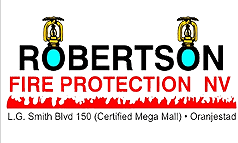|

Remember the Three A's
ACTIVATE the building alarm system or notify the fire department by calling 911 or 100. Or, have someone else do this for you.
ASSIST any persons in immediate danger, or those incapable on their own, to exit the building, without risk to yourself.
Only after these two are completed, should you ATTEMPT to extinguish the fire.
What is Fire?
In order to have a fire, there must be three elements:
Fuel: something which will burn
Heat: enough to make the fuel burn
Oxygen: air
All three elements must be present at the same time to have a fire. Fire will burn until one or more of the elements is removed, then will go out.
Classes of Fires
There are four classes of fires. All fire extinguishers are labeled, using standard symbols, for the classes of fires on which they can be used.
A red slash through any of the symbols tells you the extinguisher cannot be used on that class of fire. A missing symbol tells you only that the extinguisher has not been tested for a given class of fire, but may be used if an extinguisher labeled for that class of fire is not available.
Types of Fires:
CLASS A - Ordinary combustibles such as wood, cloth, and paper.
CLASS B - Flammable liquids such as gasoline, oil, and oil-based paint.
CLASS C - Energized electrical equipment, including wiring, fuse boxes, circuit breakers, machinery and appliances.
CLASS D - Combustible metals such as magnesium or sodium.
Using an Extinguisher?
Remember P.A.S.S.
Always keep your back to an unobstructed exit, stand six to eight feet away from the fire, and follow the PASS (Pull Aim Squeeze Sweep) four-step procedure:
PULL the pin - This unlocks the operating lever and allows you to discharge the extinguisher. Some extinguishers may have other lever-release mechanisms.
AIM low - Point the extinguisher nozzle (or hose) at the base of the fire.
SQUEEZE the lever above the handle - This discharges the extinguishing agent. Releasing the lever will stop the discharge. (Some extinguishers have a button instead of a lever.)
SWEEP from side to side - Moving carefully toward the fire, keep the extinguisher aimed at the base of the fire and sweep back and forth until the flames appear to be out. Watch the fire area. If the fire re-ignites, repeat the process.
|








